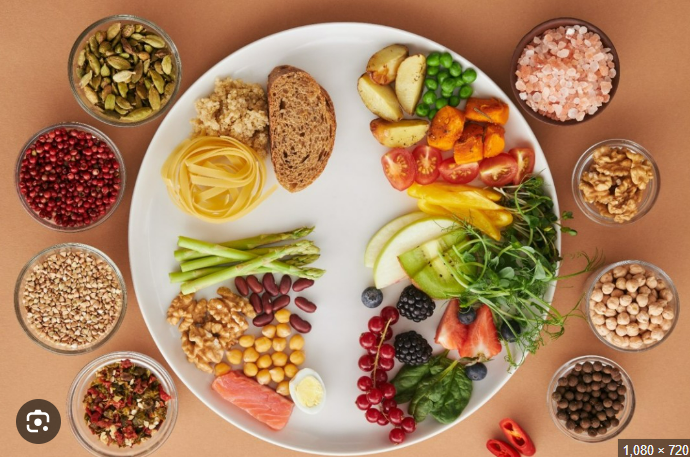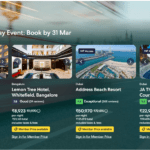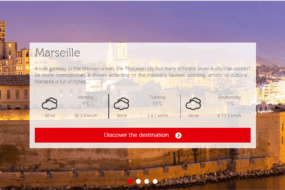
Travel isn’t just about ticking off landmarks or capturing perfect Instagram shots—it’s about connection. It’s about understanding people whose daily lives are different from yours, sharing in their customs, and seeing the world through a new lens. This kind of deep, meaningful travel is called cultural immersion, and it can turn any trip into a transformational experience.
Whether you’re staying for a week or several months, there are many ways to authentically engage with local culture. In this guide, we’ll explore how to immerse yourself in a destination’s daily life, from eating with locals to participating in traditions—and why it makes all the difference in how you experience the world.
1. Stay Where the Locals Stay
Your choice of accommodation can set the tone for your trip. While luxury resorts and international hotels offer comfort and familiarity, they often isolate travelers from the true cultural landscape. To immerse yourself:
Consider These Alternatives:
- Homestays: Platforms like Homestay.com or local networks offer rooms in private homes. It’s an opportunity to live with a family, share meals, and join in daily life.
- Guesthouses or locally-run hostels: Often smaller, more personable, and staffed by locals who can give insider tips.
- Farm stays or eco-lodges: Especially in rural areas, these options let you see how people live in connection with the land.
- Vacation rentals in residential neighborhoods: Staying where locals live rather than tourist hotspots gives you a more genuine glimpse into everyday life.
Wherever you stay, prioritize interaction over isolation. Ask your hosts questions, offer help, and show respect for their customs.
2. Eat Local—And Eat With Locals
Food is a powerful cultural bridge. It’s tied to history, community, identity, and daily ritual. Don’t just eat in trendy cafes or tourist-geared restaurants—seek out the flavors and experiences that locals cherish.
How to Dive Into the Local Food Scene:
- Eat at local markets and street stalls: These are often the most authentic—and tastiest—places to sample local fare.
- Take a cooking class: Learn to make regional dishes from someone who grew up cooking them.
- Attend a food tour: A guided food tour often includes stories behind the meals and introductions to family-run businesses.
- Try communal dining experiences: Websites like EatWith or Traveling Spoon connect travelers with locals who host meals in their homes.
- Learn a few food-related phrases: Even a simple “What do you recommend?” in the local language can open doors.
Remember to observe how locals eat. Do they share dishes? Eat with their hands? Is tipping customary? Follow suit, and you’ll show respect and open up deeper conversations.
3. Learn the Language (Even Just a Bit)
You don’t need to become fluent to build bridges, but learning a few key phrases can dramatically change how you’re received. Locals are often touched when travelers make an effort—even if it’s clumsy.
Useful Phrases to Learn:
- Hello / Goodbye
- Please / Thank you
- Excuse me / I’m sorry
- How much does this cost?
- Where is the bathroom?
- Delicious!
- I don’t understand / Do you speak English?
Use apps like Duolingo or Memrise before and during your trip. And don’t be afraid to carry a phrasebook or use Google Translate. It’s not about perfection—it’s about connection.
4. Use Local Transportation
Instead of relying on taxis or tourist shuttles, explore how locals get around. This gives you a more intimate view of everyday life and can lead to unplanned encounters.
- Ride public buses or subways
- Take local ferries or tuk-tuks
- Rent a bike and cycle where locals commute
- Walk—especially through residential neighborhoods
Transportation is where you’ll hear unfiltered snippets of conversation, observe fashion and behavior, and feel the rhythm of the place. It’s not always comfortable—but that’s the point.
5. Attend Local Events and Festivals
Festivals are a vibrant expression of culture—whether it’s a religious procession, a music festival, a harvest celebration, or a neighborhood fair. These moments are often joyful, communal, and deeply rooted in tradition.
Tips for Participating:
- Do your research ahead of time to understand the event’s significance.
- Dress appropriately—especially for religious or traditional events.
- Ask permission before taking photos—not everything is meant to be a photo-op.
- Volunteer or participate if invited—handing out food, joining a dance, or helping decorate can lead to unforgettable memories.
Even attending a local sports match or school play can give you insight into what people care about and how they come together.
6. Shop Where Locals Shop
Skip the tourist shops. Instead, browse the places where residents actually go to buy food, clothing, and household items.
- Visit morning markets or weekend bazaars
- Check out grocery stores and convenience shops
- Buy handicrafts directly from artisans
- Support social enterprises and cooperatives
Ask about the story behind a handmade item, or chat with the vendor about daily life. These interactions often spark meaningful exchanges—and you’ll take home something with real value and memory attached.
7. Slow Down and Observe
Cultural immersion requires time and attention. It means not trying to cram ten attractions into one day, but instead letting the place unfold around you.
- Spend a whole afternoon in a local café, just people-watching.
- Sit in a park where families gather.
- Join a community yoga class or walking group.
- Follow your curiosity—even if it leads down an unplanned path.
By slowing down, you allow room for spontaneous connection. You start to notice small details—the way neighbors greet each other, how kids play after school, how people pray, protest, or celebrate. These are the threads that make up a culture’s fabric.
8. Take a Local Class or Workshop
One of the most immersive ways to connect is to learn a local skill. It could be anything—dancing, weaving, martial arts, painting, farming, or pottery.
- Choose classes taught by locals rather than expats.
- Ask questions about the tradition and its meaning—many practices are deeply symbolic.
- Use it as a doorway to community—instructors often become friends, and classes can introduce you to others with shared interests.
The goal isn’t to become an expert, but to participate in the creative or practical life of a culture.
9. Respect Cultural Norms and Etiquette
Immersion is not just about experiencing—it’s about engaging respectfully. This means doing your homework on what’s considered polite, offensive, or appropriate in a given culture.
- Learn about gestures, greetings, and taboos
- Understand religious customs and dress codes
- Be mindful of photography in sacred or personal spaces
- Avoid making assumptions or comparisons with your home country
Humility goes a long way. Ask questions with curiosity, not judgment. And when in doubt—watch what locals do and follow their lead.
10. Volunteer Mindfully
Volunteering can be a powerful way to engage with local communities, but it must be approached thoughtfully. Avoid programs that exploit communities for tourist gratification, such as orphanage tourism or poorly managed short-term teaching gigs.
If You Choose to Volunteer:
- Work with reputable organizations led by locals.
- Ensure your skills are genuinely needed and sustainable.
- Stay for a longer period if possible—it takes time to build trust.
- Be humble: you’re there to learn as much as to help.
The most respectful volunteering recognizes that the community holds the knowledge and power. You’re not there to “save”—you’re there to support and learn.
11. Ask Questions—and Listen Deeply
Curiosity is your best tool for immersion. Locals often appreciate when travelers want to understand their way of life.
- Ask: “What’s your favorite part of living here?”
- Ask about family traditions, holidays, or challenges.
- Listen without interrupting or inserting your own opinions.
- Avoid sensitive topics unless invited to discuss them.
These conversations may happen with a taxi driver, a vendor, a teacher, or a child. Each one adds depth and texture to your experience.
12. Keep a Cultural Journal
Write down what you see, hear, taste, and feel. Record the unexpected, the beautiful, the confusing. Reflect on how the culture differs from your own, and how it changes your thinking.
This practice helps you process and remember your journey—not just the places, but the people and moments that made it meaningful.
Why Cultural Immersion Matters
In an increasingly globalized and polarized world, cultural immersion is more than a travel style—it’s a form of empathy. It reminds us that there are many ways to live a life, many definitions of happiness and success, many expressions of beauty and meaning.
When you immerse yourself in a culture, you’re not just seeing the world—you’re participating in it. And in doing so, you return home with more than souvenirs. You return with stories, relationships, insights—and perhaps a little more humility and wonder.
Final Thoughts
Cultural immersion requires a shift from being a spectator to becoming a participant. It’s not always comfortable or easy, but that’s where growth happens. So next time you travel, go beyond the guidebooks. Choose connection over convenience. Ask questions, stay curious, and open your heart.
Because the best way to truly know a place is not through its monuments, but through its people.
If you’d like this formatted as a blog post, article PDF, or split into a series, let me know and I can help with that too!






















